*Whaley completed five trades in three days dramatically changing the complexion of the Bills roster. Buffalobills.com was given exclusive access to the Bills draft room where the action started early and lasted right through day three, providing Buffalo with instant impact talent on offense while also recouping picks for the future.
*
Working the phones
In watching Bills GM Doug Whaley call the shots in his first NFL draft what stood out was his decisive nature when it comes to making a call on a proposed trade. It took just a few seconds for Whaley to know if it was worth the trouble. Whether he was rejecting an offer, promising to revisit one with a counter or accepting a proposal outright Whaley has a knack for quickly assessing if a deal is equitable.
The Bills personnel boss never appeared hurried or tense. He possessed an innate feel for what made sense and what did not. Whaley's knack for assessing the balance of a trade however, doesn't come from intuition. It's acquired expertise.
"My whole job for 11 years in Pittsburgh was the trade phone in the draft room so I have a base of knowledge of what is right and what is equitable and what's not," Whaley told Buffalobills.com. "I'll have (Senior VP of Football Administration) Jim (Overdorf) check the trade chart if I'm not sure, but in most instances it's a gut feeling based on past experience."
Whaley's past experience benefited him greatly as he called the shots of his first NFL draft this past weekend. Buffalobills.com takes you into the Bills draft room to detail each of the deals Whaley and the Bills struck during the 2014 draft.
Sending Stevie to San Fran
Entering day two of the NFL draft Stevie Johnson was a talented player at a crowded position group on Buffalo's roster. With the selection of Sammy Watkins with the fourth overall pick acquired in a high-pressure trade with Cleveland (see below) on day one of the draft, Buffalo had too many playmakers for a game played with one football. Whaley had his personnel department make some calls to other clubs prior to day two of the draft.
"Before the day started our pro personnel department had contacted a lot of teams," said Whaley. "That morning San Francisco contacted us about Stevie Johnson and it got the ball rolling."
San Francisco wasn't alone. There were other teams expressing interest. In an effort to separate from the pack 49ers GM Trent Baalke made a solid initial offer.
"We had a baseline where we wanted to work off of and San Francisco came in higher than that baseline so we narrowed our focus to the 49ers," Whaley said.
The final terms of the deal sound simple enough. Stevie Johnson in exchange for a conditional fourth-round pick in 2015. Reaching those terms however, involved a lot of back and forth discussion.
"It was an intense negotiation," Whaley said. "A lot more intense than the Cleveland deal. Just trying to hammer out the compensation that they felt worked for them and what we felt worked for us. We didn't feel like we needed to give up a good player just to get rid of him. We wanted to make the deal work for both of us."
Buffalo was interested in draft choices and San Francisco had a lot of them in this year's draft. The Bills also had lost picks from their 2015 draft via the trade for Sammy Watkins the night before. Both forms of compensation were discussed.
"We went back and forth with different scenarios. Some involved compensation for this year, some next year, some financial compensation," said Whaley. "There were a lot of different scenarios and we probably talked on the phone and called each other back six or seven times before the deal got finished."
After two hours of conversation between the two personnel chiefs the terms were finalized. The toughest part for Whaley was the next call he had to make to the receiver, who despite his critics was committed to making Buffalo a winner.
"It was professional," said Whaley. "Stevie has been a consummate professional with everything since I've been here. He knows it's a business and we thanked him for everything he's done for the Buffalo Bills and the Buffalo community. One thing that we thought was a positive was we were sending him to his hometown team. So I think he appreciated that."
I would never trade my time w/ @buffalobills. They've blessed me & my fam since day 1. Thank you BUFFALO!! pic.twitter.com/ej21V62OMJ — HiMom. (@StevieJohnson13) May 9, 2014
The deal allowed the Bills to recoup a pick they had lost in the Watkins trade, with the potential for the pick to improve to a third rounder if Johnson puts up numbers in 2014 for San Francisco.
The push for Sammy

Buffalo worked the phones for the few weeks leading up to the draft. They wanted to get the word out to the teams ahead of them that the Bills were interested in making a move up the board from ninth overall.
On his first day in Buffalo after being picked 4th overall in the 2014 NFL Draft by the Bills, Sammy Watkins got a look around One Bills Drive and met his coaches, Bills personnel and Hall of Famer Thurman Thomas.







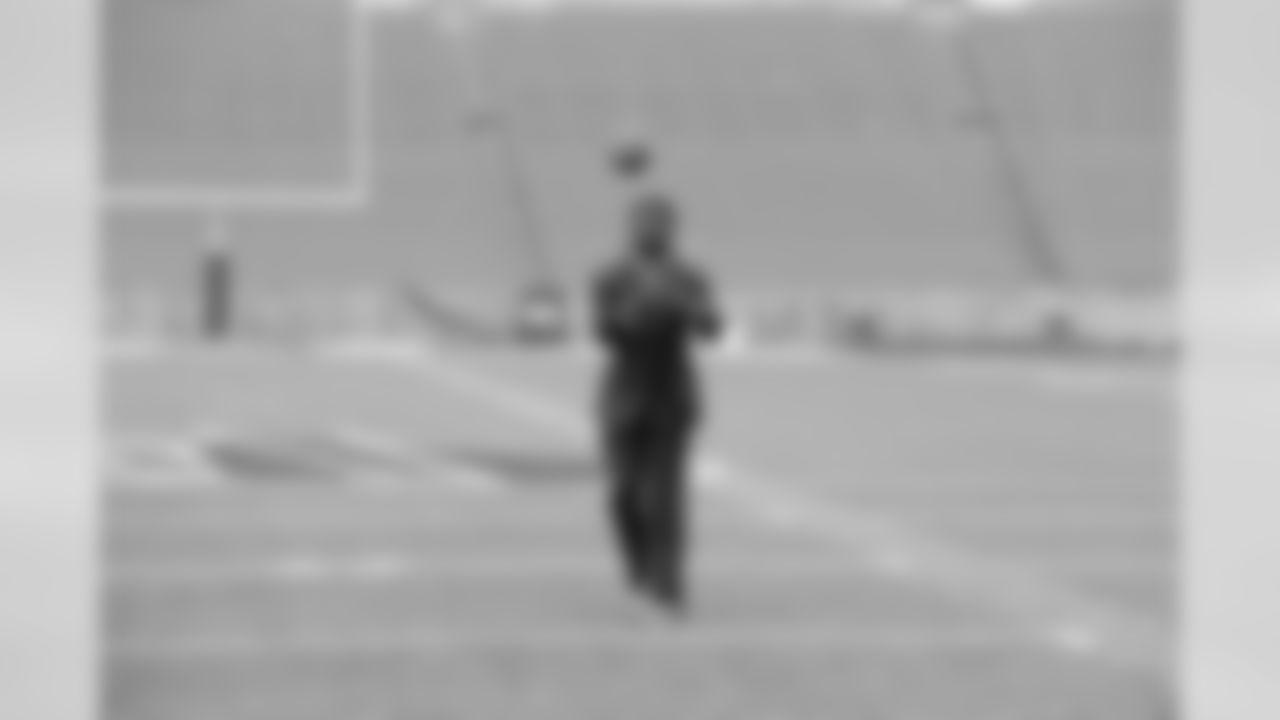

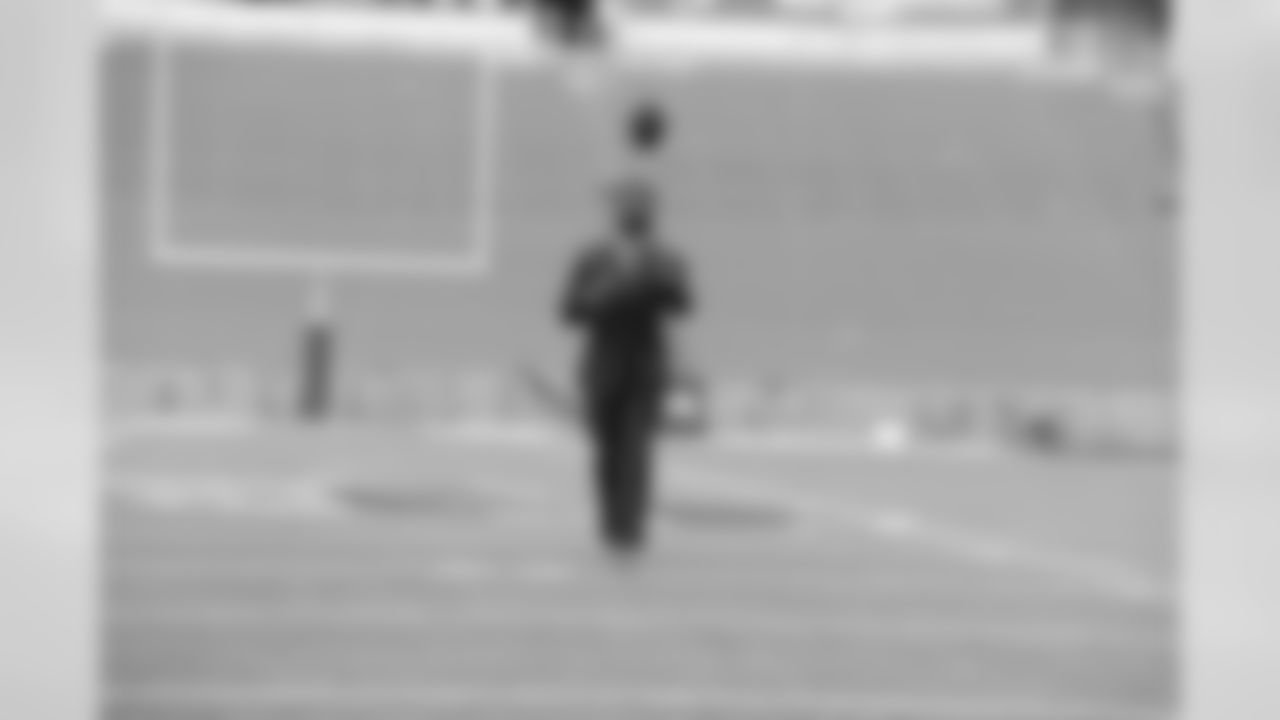
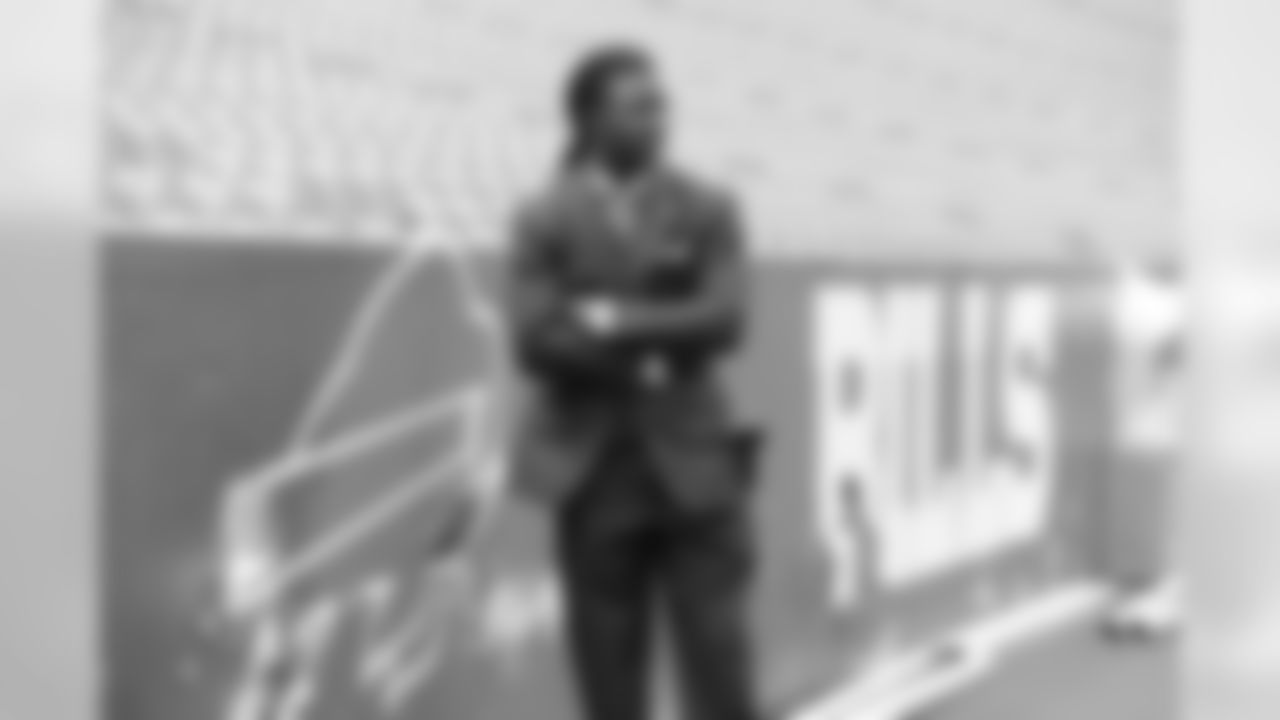

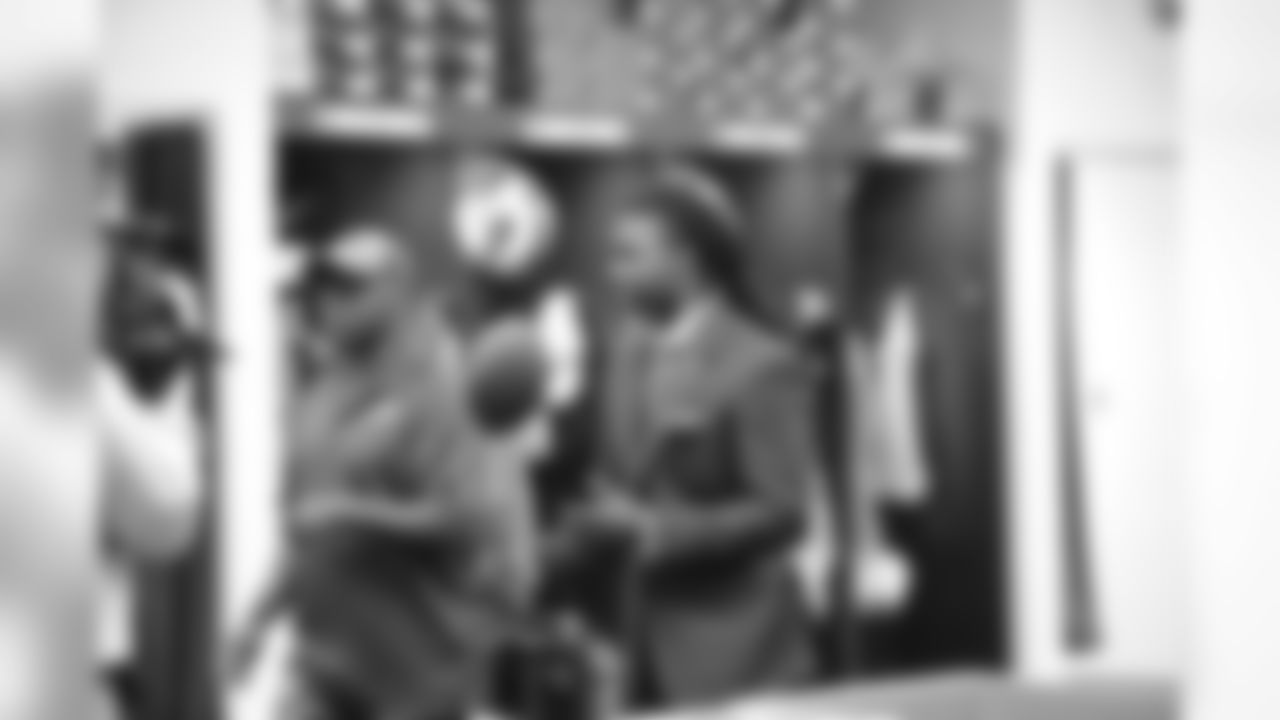

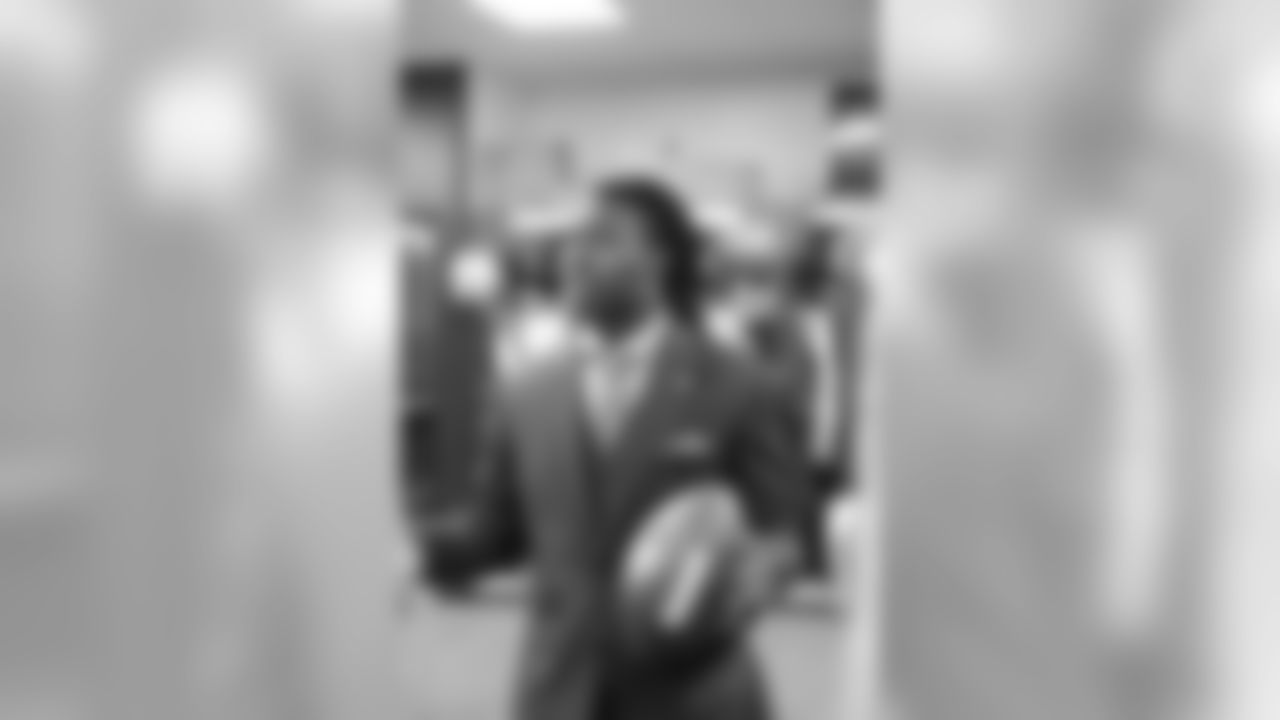
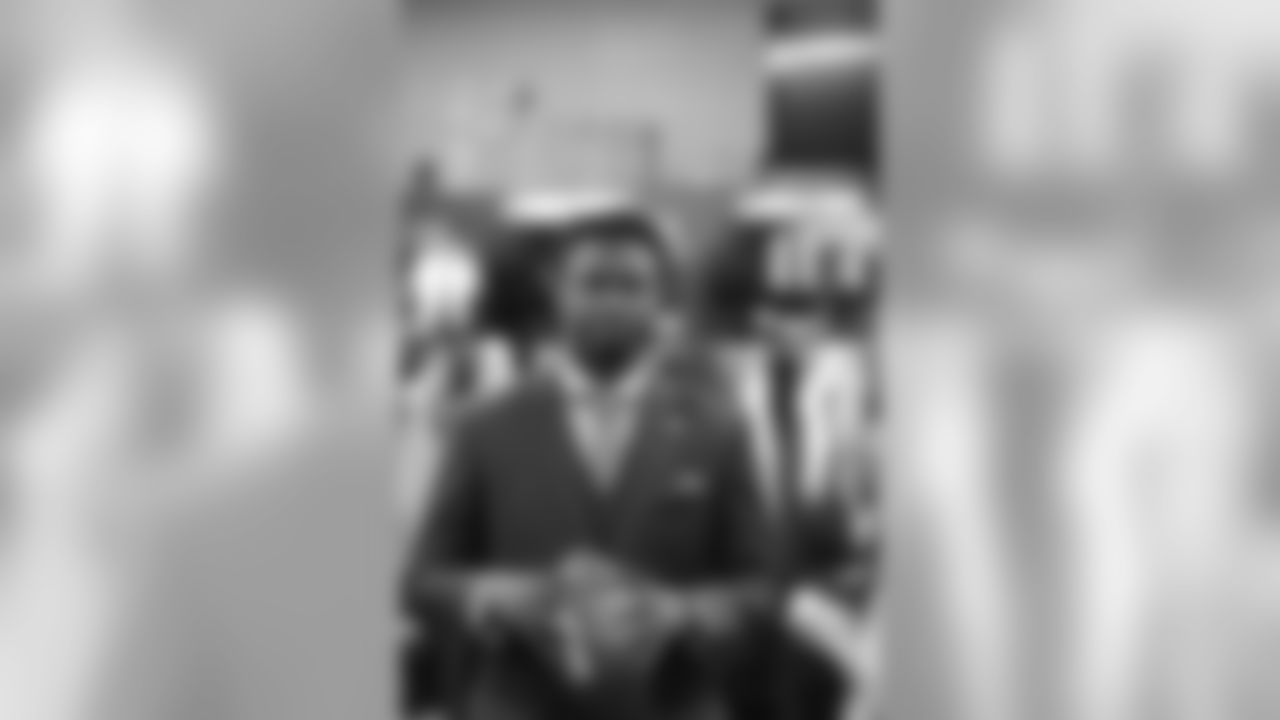

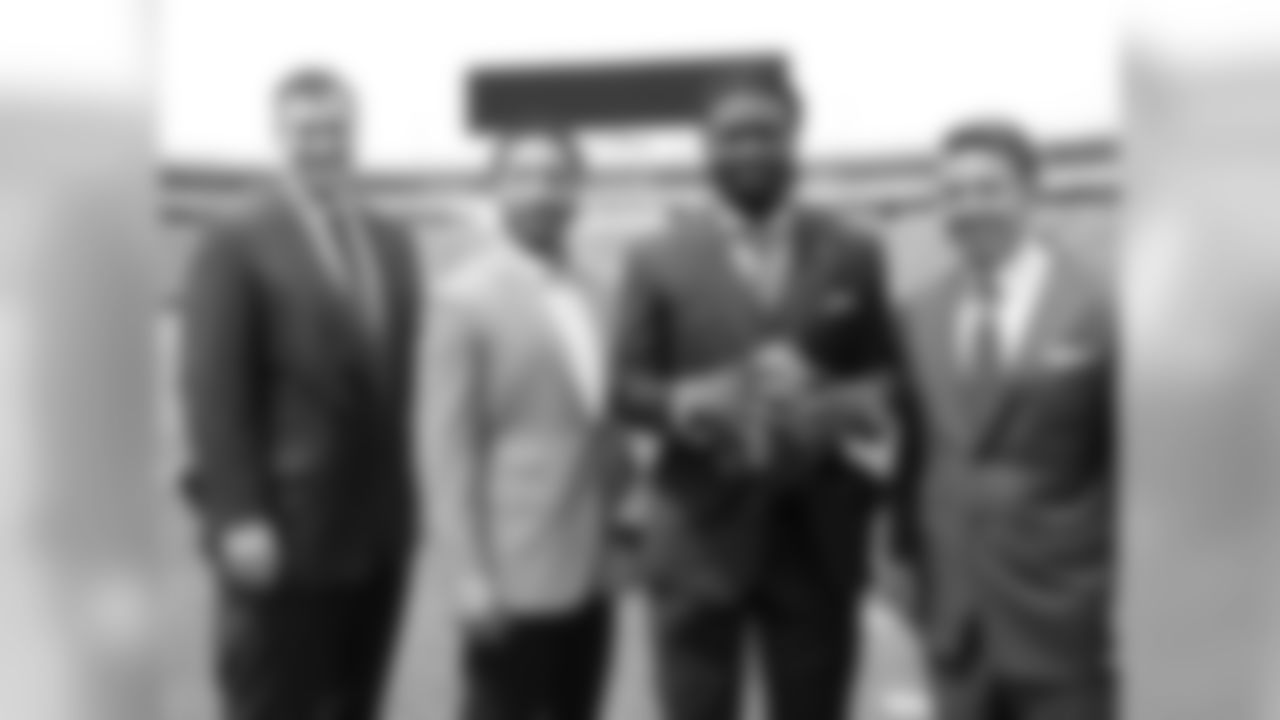
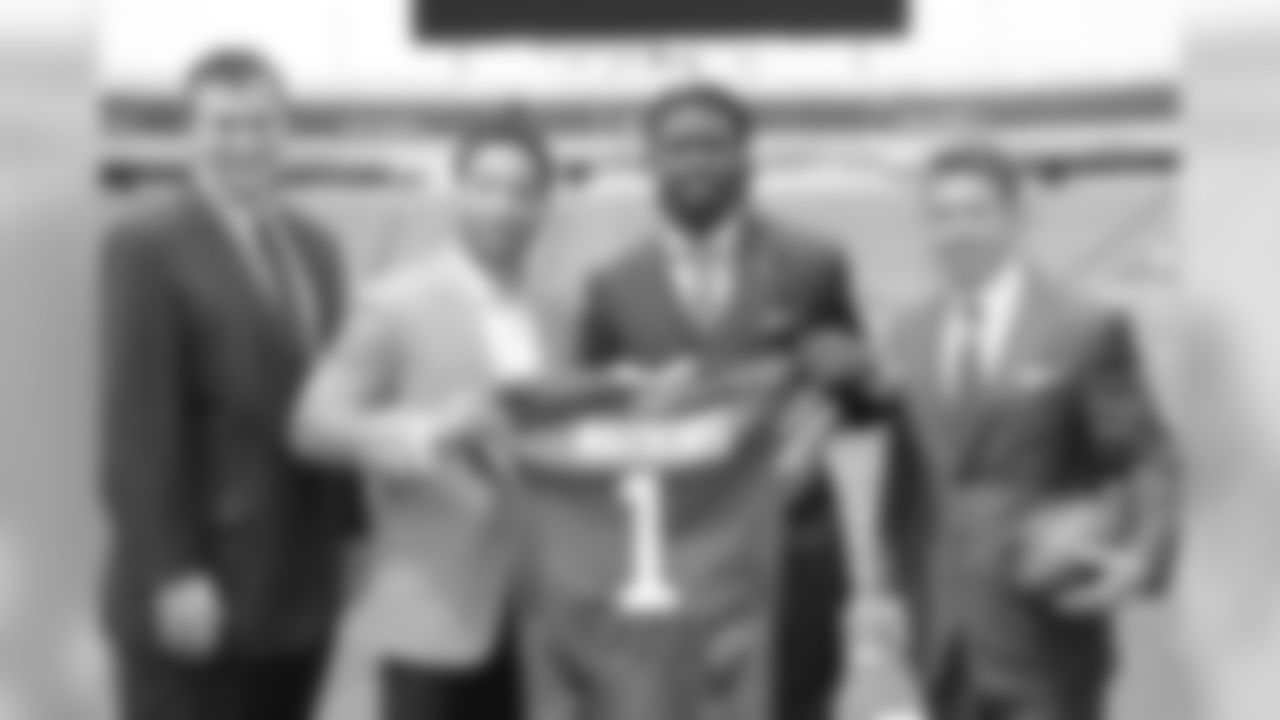

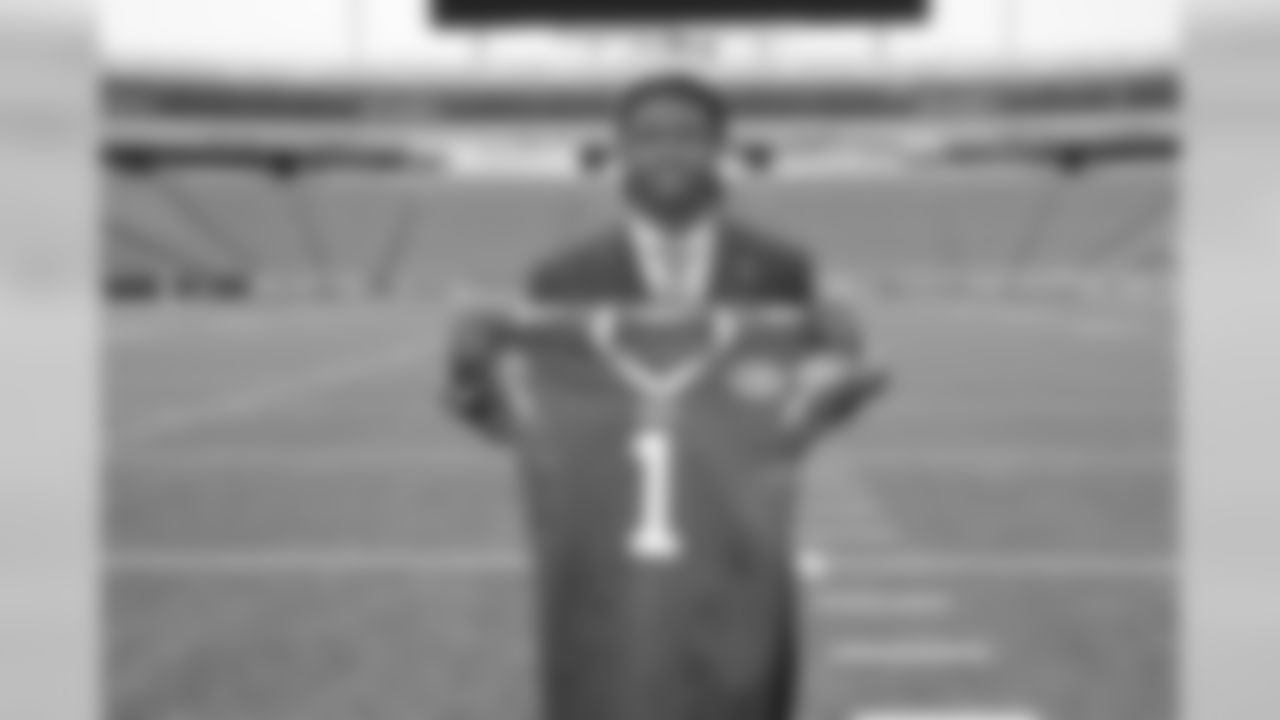
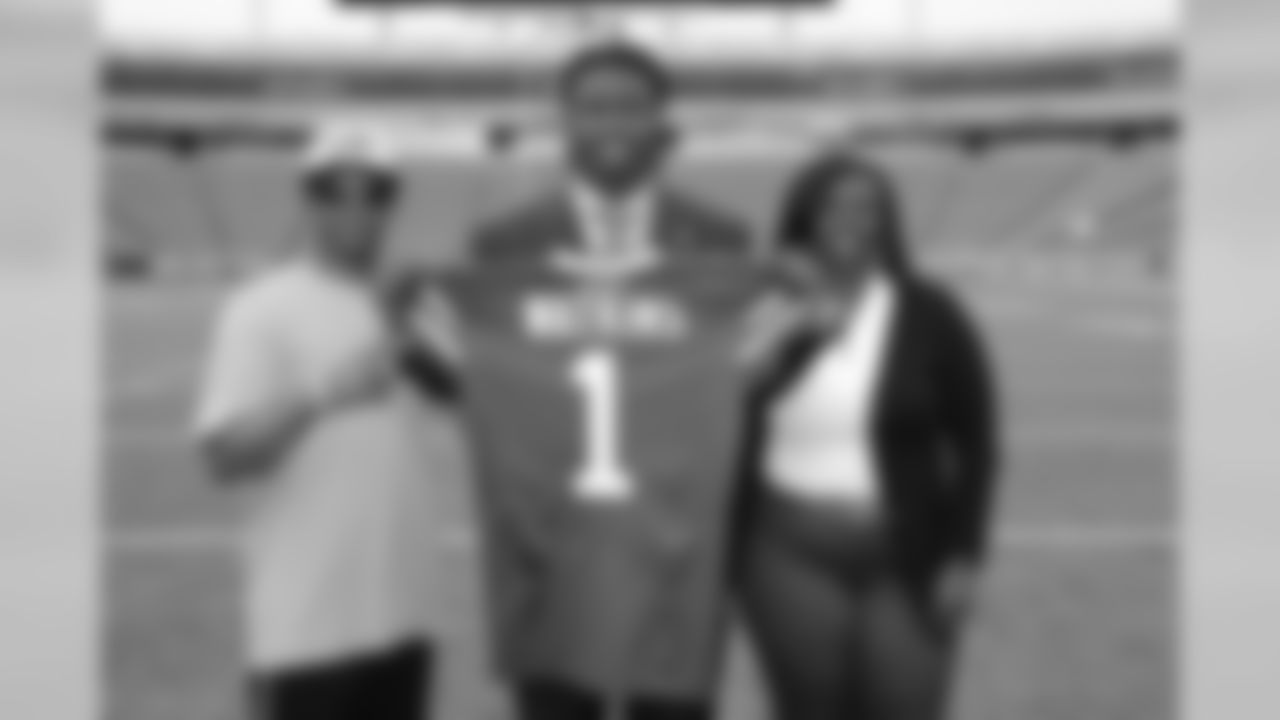




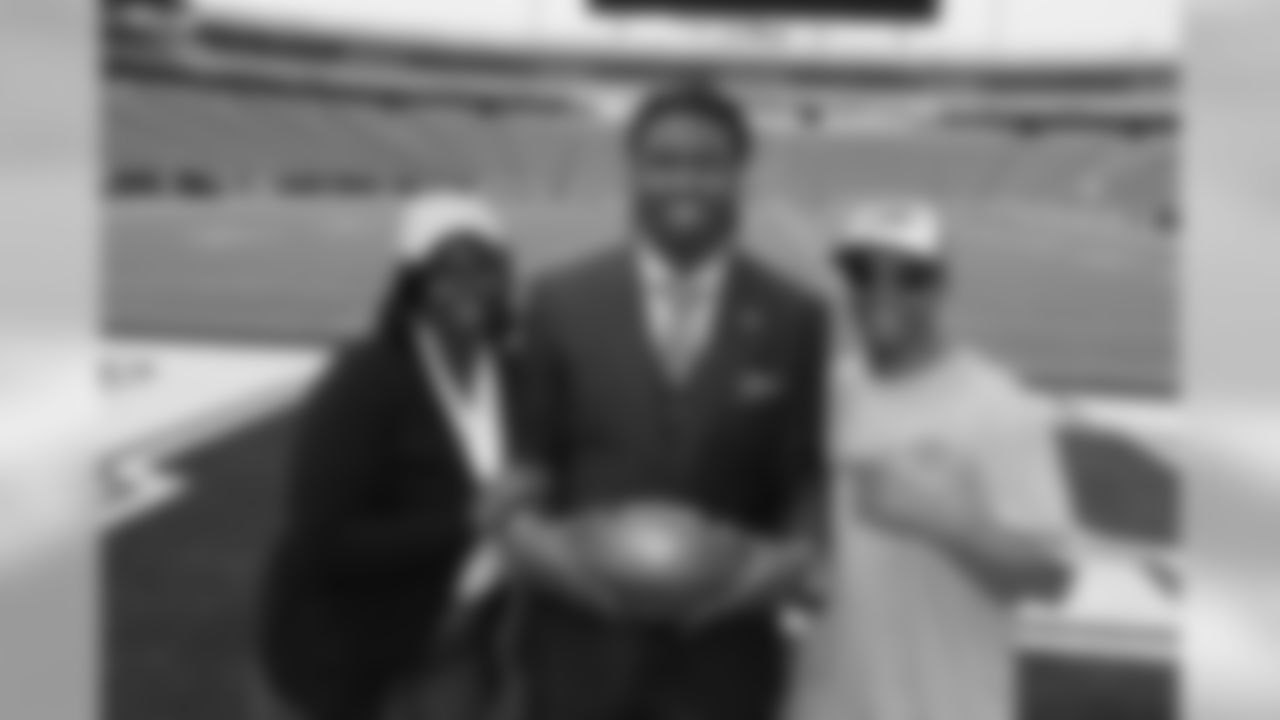

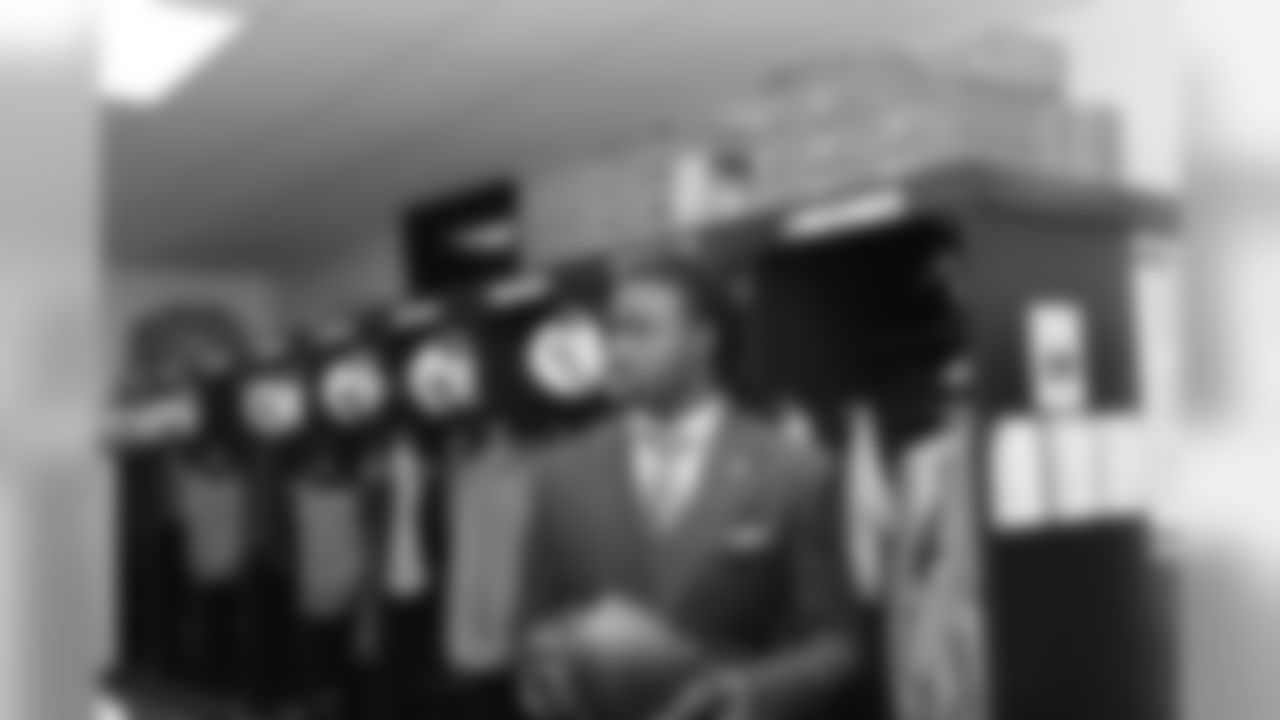














On the whole not much was developing until the draft was underway. Ten minutes in Cleveland made their first phone call to Buffalo.
"(Cleveland GM) Ray Farmer asked me if we were still interested in moving up and if so here are the specifics of what we would request to make sure we get fair value for you guys moving up," said Whaley. "I took down those notes and I said, 'We'll get back to you. We've got to make sure our guy is there. As it gets closer to your pick we'll be back in touch.' I told coach (Marrone), (President and CEO) Russ (Brandon), Jim (Monos) and (Director of College Scouting) Kelvin (Fisher) the details of the proposal."
A first and a third round pick was the asking price. Whaley and his team worked on formulating a counter offer while St. Louis took offensive tackle Greg Robinson off the board. Shortly thereafter Whaley's cell phone rang. He answered and left the draft room. It was Cleveland again checking to make sure the Bills were definitely interested. Whaley told them they were and the Browns said they would call back.
The Bills weren't certain which direction Jacksonville was headed, but the selection of Central Florida QB Blake Bortles elicited some smiles in Buffalo's draft room. Whaley was immediately back on the phone calling Cleveland with the Browns now on the clock.
"I came back with another counter offer and he said, 'We'll call you back.' Now time is ticking," said Whaley. "They called us back. They countered and we came back with another counter offer. He said, 'We'll think about it.' Then he said, 'Hold on I've got another call.' That's when the whole room got silent and there was a pause."
Browns GM Ray Farmer hung up and said he'd call back in 30 seconds. Whaley could only think that a deal that seemed inches away was being snatched away from him by another team. Less than 30 seconds later the Browns called back.
"Ray said, 'Let's go over the deal again,'" said Whaley. "We made sure of the specifics. He repeated it and I repeated to make sure all the 'T's were crossed and 'I's were dotted. Then we sent it into the league. That was probably with five minutes left to pick."
The trade was approved and Whaley had Coordinator of College Scouting Doug Majeski call Sammy Watkins. After getting a hold of the dynamic Clemson receiver, the top player on Buffalo's board, Whaley told New York to send the card up. Watkins belonged to the Bills.
Delegating the deal
After making attempts to find common ground in periodic discussions over more than a calendar year with Philadelphia GM Howie Roseman on what it would take to acquire RB Bryce Brown, Whaley thought the deal would never happen.
Philadelphia tried to resuscitate a potential deal two days before the draft, but Whaley didn't feel like there was any discernible progress.
"They brought Bryce Brown's name up again. We kicked around a lot of different scenarios and it was just kind of treading water," he said. "It wasn't really going anywhere. At one point I kind of pushed it out of my mind."
Focused on the additions they were trying to make on day three of the draft he delegated any further negotiations to President and CEO Russ Brandon.
"Russ really got involved with it and worked it out where it came to fruition," said Whaley. "It intensified Friday during the draft and it got to a point where again we thought it was dead. Then Russ picked it up again Saturday morning and it picked up steam and we finally made it happen.

"It was always a priority because we liked the player, but we weren't going to do a bad deal. That's one of the things that we pride ourselves on. We want to make sure it's equitable for all parties involved. Everyone wants to walk away feeling like they got a fair shake."
Brown was acquired for a conditional future draft choice and a swap of seventh round picks in 2014. Knowing Brown had limited work and two years left on his contract the Bills liked the value.
"To draft a player of that caliber in the fourth round we would've felt really good about that so we felt the compensation worked out for both teams," said Whaley.
The deals that don't get done
Not every trade proposal is a win-win situation. Trying to move to a place on the board at a time when those picks are highly coveted might be the hardest move of all. Whaley and the Bills found out first hand.
In the latter half of the second round the Tennessee Titans took the first running back off the board, Washington RB Bishop Sankey with the 54th pick. Buffalo knew a run on backs was about to begin and wanted to get in on the action. Whaley had Overdorf call the next few teams in an attempt to get back into the bottom of round two.
"Jim started working the phones. So we were seeing what it would take for us to get up there and if there were any teams that would take our offer," said Whaley. "We went team by team and we had a limit of what we were going to offer and see if they would take it."
The Bills were offering multiple mid-round picks to try to move up to a spot in the mid-50s. Cincinnati wasn't interested and they soon found out why when the Bengals drafted LSU RB Jeremy Hill with pick 55.
Whaley told Overdorf to improve the Bills offer of mid-round choices. Overdorf called Miami at 57, New Orleans at 58, Indianapolis at 59 and Carolina at 60. No one was interested.
After the Broncos selected Cody Latimer, the Dolphins were on the clock at 57, but soon after they swung a trade with San Francisco. The Dolphins only needed to slide back four spots to the 49ers pick at 61 to do the deal allowing them to remain in the second round.
"What we were told by Miami was the 49ers deal was more appealing because they didn't have to drop down as far because San Francisco still had a pick in the second round (at 61) so that made sense to them and it made sense to us," said Whaley.
The 49ers took Ohio State RB Carlos Hyde, a pre-draft visitor to Buffalo, and the running back run was over.
"They got our guy," said Monos. "You win some, you lose some."
Small moves have their benefits
The Bills took a host of calls throughout the course of draft weekend. In the second round an AFC team called in an effort to trade up to the Bills spot at 41 offering their fourth-round pick. Whaley wasn't interested primarily because they had three players in mind at their pick and moving that far down the board was too big a risk.
"We didn't think the compensation was that good for us to sacrifice the players in that group that we had set aside," he said.
Shortly after going on the clock however, Buffalo was presented with a different offer by St. Louis, which sat just three picks away at 44.
"Our three players were still there and we were just dropping three spots so we could pick up a fifth-round pick, which was better than the sixth round pick we gave up for Mike Williams," Whaley said. "So we bettered ourselves on that trade and then we were confident going down and having a very good shot at getting one of the players we were going to pick at 41."
Among the group of players they had their top one was still on the board at 44 in Alabama OT Cyrus Kouandjio.
On day three Buffalo was presented with a similar offer in round five when Tampa Bay called. The Bills had a pair of picks in the round at 149 and 153 overall. The Bucs wanted their first fifth-round selection.
"They presented the terms and they were acceptable to us and then they called back and actually offered a second package that was similar and we were good with those terms too," said Whaley. "So we gave up that fourth rounder next year (in the Watkins trade), but we end up getting a fifth rounder from Tampa in 2015. We lost a fifth rounder this year, but we had a pick a few spots later so we could still get a player we were interested in and we added a seventh. It was a no brainer for us."
Buffalo landed Baylor G Cyril Richardson in round five and Miami OT Seantrel Henderson in round seven.
Success through preparation
All told Whaley's five trades on draft weekend netted one of the best players in the draft, a speed element at running back, an additional draft choice in 2014 and the potential to go from five picks in 2015 to eight.
Whaley said at the pre-draft press conference two weeks prior that the Bills were open for business, but he wasn't anticipating this much action.
"Not at all, but we were prepared for a lot of different scenarios and situations and that's why we felt comfortable doing what we were doing," he said. "Somebody in the media mentioned when you're bold you run the risk of making mistakes, but not when you're prepared for every situation."












